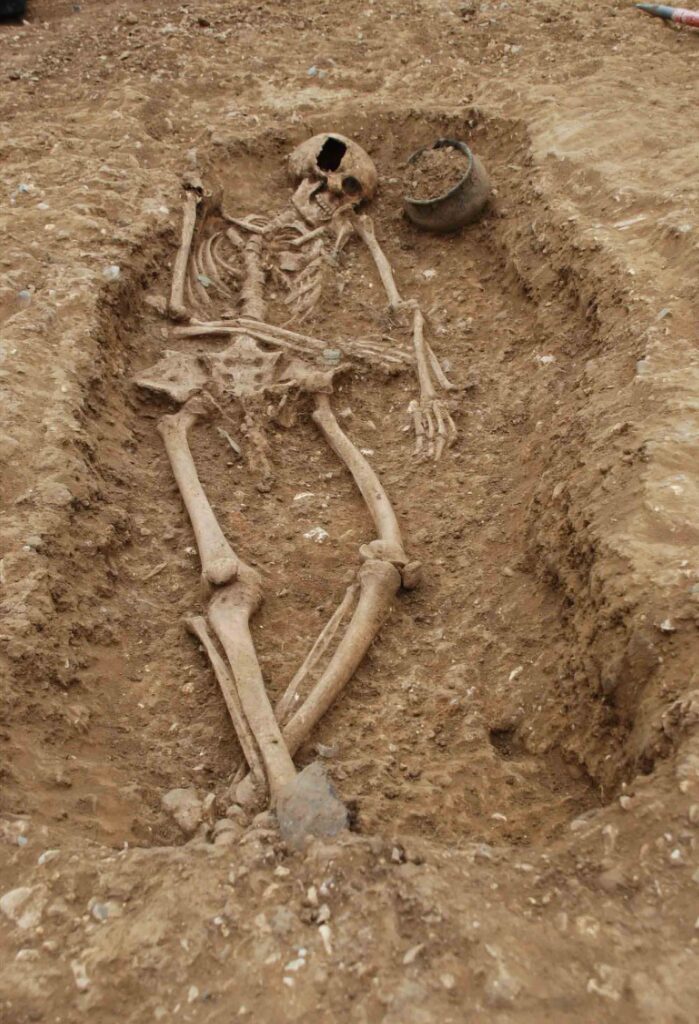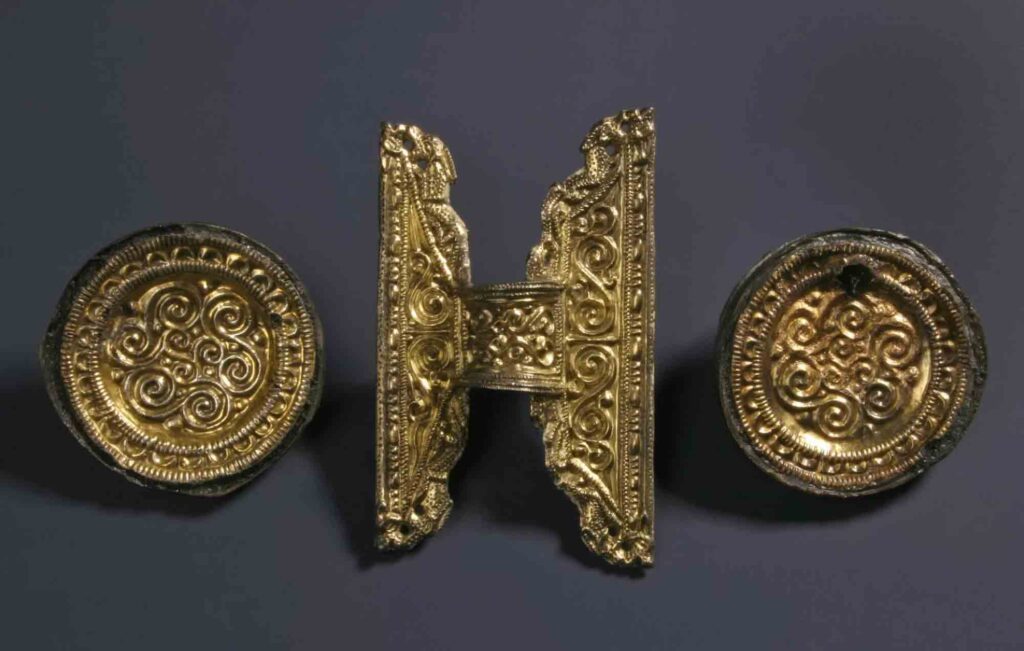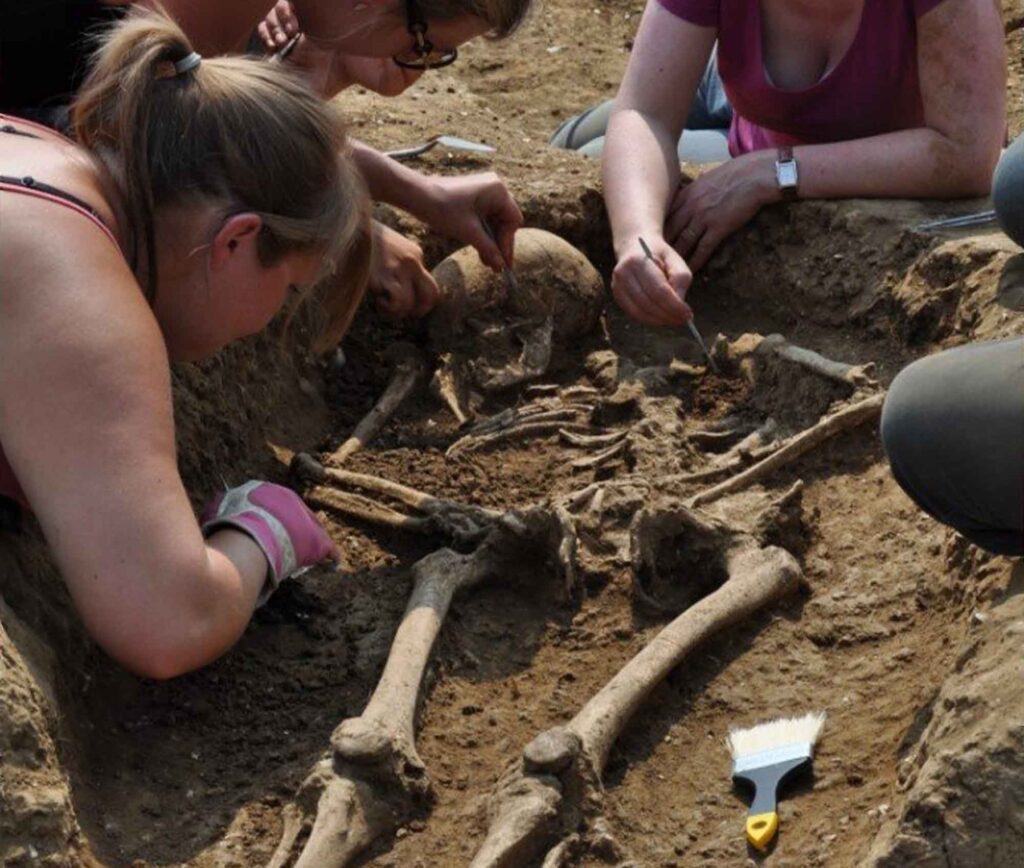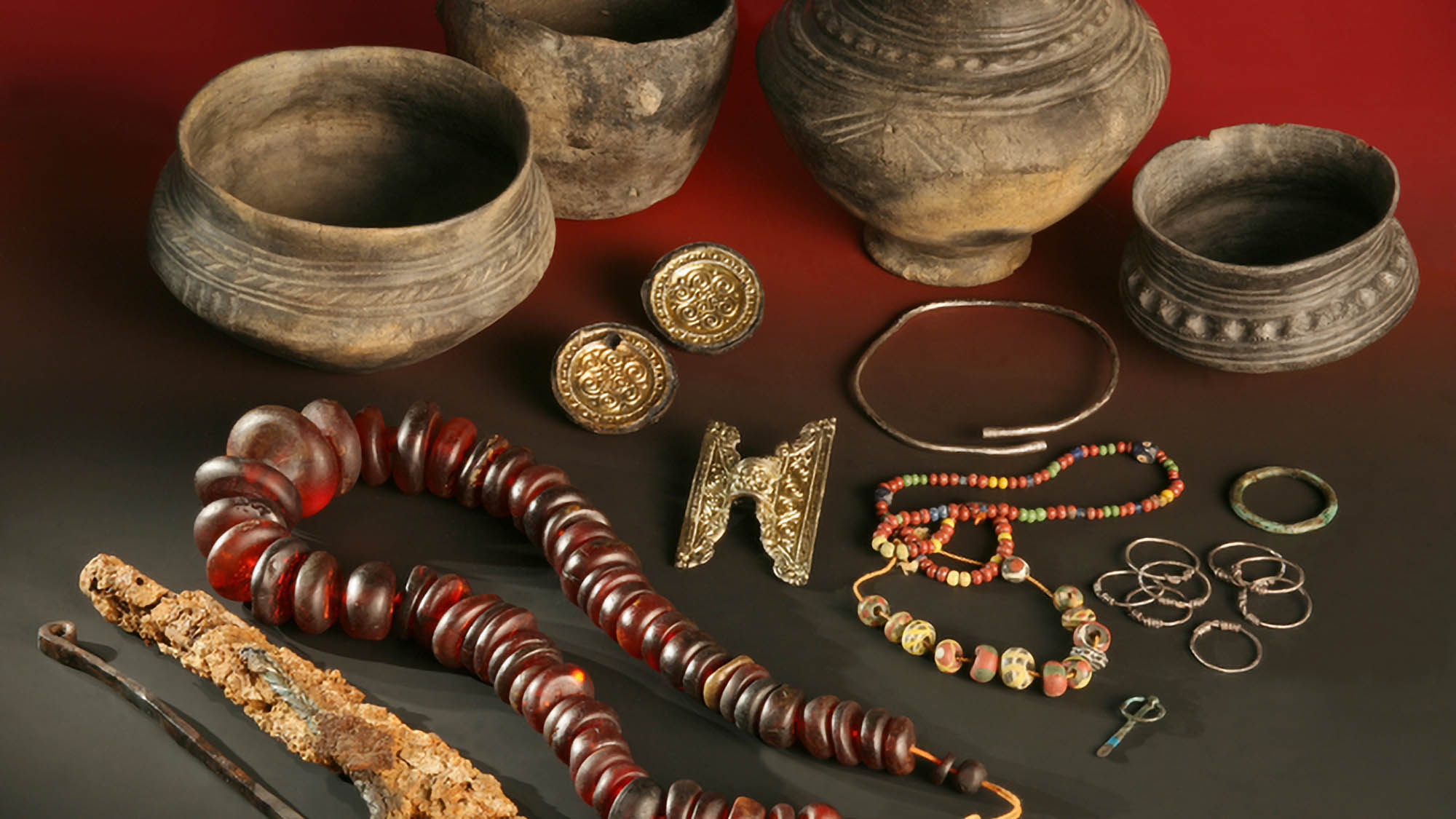A study led by UK and German scientists has revealed that Anglo-Saxons were only 24 per cent English.
Early-medieval mass migrations influenced the formation of British society by increasing its European ancestry up to 76 per cent.
Max Planck Institute of Evolutionary Anthropology and the University of Central Lancashire researchers analysed hundreds of individuals from 37 archaeological sites in Britain, Ireland, Germany, Denmark and the Netherlands.

(Duncan Sayer/Newsflash)
They found out that families that came to the British isles originally came from continental regions in northern Germany and southern Scandinavia.
These populations predominantly inhabited Eastern and Southern England and interbred with the already existing British locals.
Researchers were even able to reconstruct a family tree across at least four generations from a Buckland cemetery near Dover and identify the point in time when migrants and locals intermarried.
Genetic comparisons showed that the family’s British side largely interacted with the newcomers.
The team led by Max Planck scientist Joscha Gretzinger evaluated DNA from 460 medieval people dating back to 1,300 AD.
Using published genetic information from more than 4,000 ancient and 10,000 present-day Europeans they identified exquisite genetic differences between the closely related groups from the North Sea regions.
Gretzinger said in a statement obtained by Newsflash: “With 278 ancient genomes from England and hundreds more from Europe, we now gained really fascinating insights into population-scale and individual histories during post-Roman times.
“Not only do we now have an idea of the scale of migration, but also how it played out in communities and families.”
The scientists also discovered that women of immigrant origin were buried with artefacts more often than local females.
In addition, both locals and newcomers buried men with weapons equally often.

(Landesmuseum Hannover/Newsflash)
These differences were locally mediated with prominent burials or wealthy graves seen across the range of origin.
For example, a woman buried with a complete cow in Cambridgeshire was genetically mixed, with majority local ancestry.
University of Central Lancashire archaeologist and co-lead study author Duncan Sayer said: “We see considerable variation in how this migration affected communities.
“In some places, we see clear signs of active integration between locals and immigrants, as in the case of Buckland near Dover, or Oakington in Cambridgeshire.
“Yet in other cases, like Apple Down in West Sussex, we see that people with immigrant and local ancestry were buried separately in the cemetery.
“Perhaps this is evidence of some degree of social separation at this site.
But present-day English people derive only 40 per cent of their DNA from these historic continental ancestors, while between 20 and 40 per cent likely came from France or Belgium, the scientists reported.
Lead senior author of the study Stephan Schiffels said: “It remains unclear whether this additional ancestry related to Iron Age France is connected to a few punctuated migration events, such as the Norman conquest, or whether it was the result of centuries-long mobility across the English Channel.
“Future work, specifically targeting the medieval period and later will reveal the nature of this additional genetic signal.”

(University of Central Lancashire/Newsflash)
Sayer added: “These findings give us a deeper insight into the impact of migration into the British Isles after the fall of the Roman Empire and of the associated cultural changes.
“What the research reveals challenges our perceptions of our own past, and for the first time it allows us to explore community histories in new ways.”
The scientists believe this was one of the greatest population transformations in the post-Roman world.
To find out more about the author, editor or agency that supplied this story – please click below.
Story By: Georgina Jadikovska, Sub-Editor: Marija Stojkoska, Agency: Newsflash
The Ananova page is created by and dedicated to professional, independent freelance journalists. It is a place for us to showcase our work. When our news is sold to our media partners, we will include the link here.




